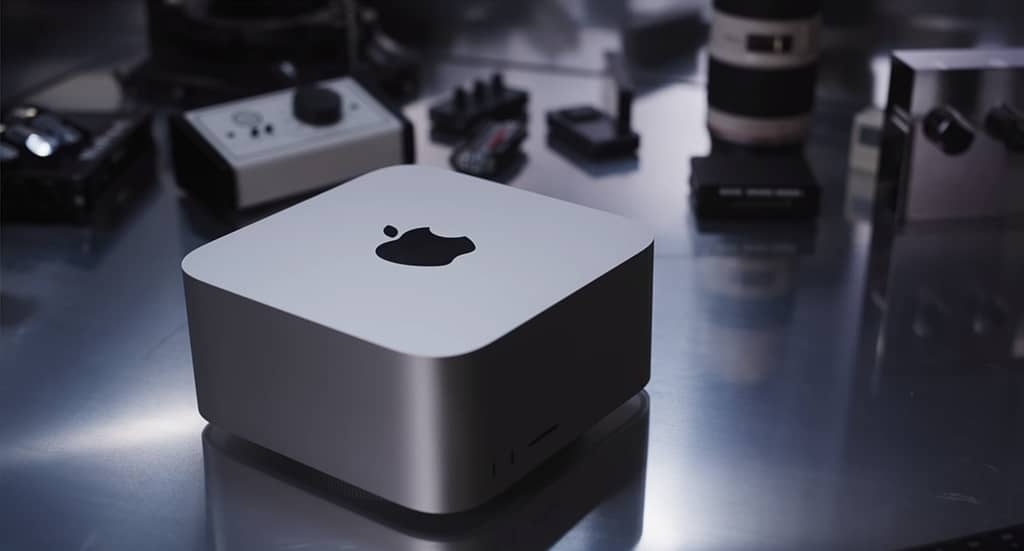Apple’s transition from Intel processors to Apple Silicon has been a significant milestone in the world of computing. This transition promised improved performance, energy efficiency, and innovation across Apple’s product lineup. After nearly three years of transitioning, the final piece of the puzzle arrived—the Apple Silicon Mac Pro. However, the introduction of the M2 Mac Pro has left many wondering why it exists alongside the Mac Studio, which seems to offer similar performance at a lower price point. In this article, we’ll delve into the reasons behind the M2 Mac Pro’s existence and why it might still be a compelling choice for a select group of users.
Apple’s journey into Apple Silicon began with the MacBook Air and Mac Mini, both equipped with the M1 chip. These initial models showcased the impressive capabilities of Apple’s custom silicon, delivering substantial performance gains over their Intel counterparts. As you move up the product lineup, you encounter the MacBook Pros with the M2 Pro and M2 Max chips, each offering enhanced performance, followed by the M2 Ultra in the Mac Studio, which is positioned as the most powerful chip for demanding professional workloads.
M2 Ultra: A Powerhouse
The M2 Ultra, found in the Mac Studio, is a marvel of engineering, offering significant performance improvements over its predecessors. It boasts a 15 to 20% boost in single-core and multi-core CPU performance, making it the fastest chip ever tested on a Mac. Additionally, the GPU performance has seen a remarkable 20% increase, thanks to the new 76-core GPU configuration. This chip has set a new benchmark for Apple Silicon, particularly in content creation workflows.
The Apple Silicon Mac Pro was the last in line to receive its much-anticipated upgrade. However, when it finally arrived, it surprised many enthusiasts. Rather than introducing a new chip, such as an M2 Extreme, which would double the M2 Ultra’s power, Apple opted to use the same M2 Ultra chip in both the Mac Studio and the Mac Pro.
This decision left tech enthusiasts and professionals pondering the purpose of the Mac Pro. Why would anyone spend an additional $3,000 on a machine that offers the same performance as a much smaller and lighter Mac Studio? The answer lies in the specific use cases and requirements of a niche group of users.
It’s crucial to understand that the Mac Pro’s existence is not meant to appeal to the mass consumer market. Instead, it caters to professionals in industries like production studios, post-production houses, and music studios. These users often have unique workflows that require specific hardware configurations.

PCI Slots: The Differentiator
The primary reason the Mac Pro exists alongside the Mac Studio is its support for PCI slots. The Mac Pro comes equipped with six open PCI expansion slots, five of which support PCI Gen 4, providing a level of versatility not found in the Mac Studio. These expansion slots are essential for professionals who require specialized hardware, such as sound cards, I/O cards, storage cards, and networking cards. While the Mac Studio offers exceptional performance, it lacks the expandability that these professionals demand.
PCI slots are critical for professionals in various fields who rely on dedicated expansion cards to enhance their workflows. While it may seem limited compared to the Mac Studio’s all-in-one design, the Mac Pro’s ability to accommodate diverse expansion needs makes it a valuable asset for those who require this level of versatility.
Future Predictions
Considering Apple’s history of product evolution, it’s plausible that the M2 Mac Pro’s design, which retained the Intel Mac Pro’s chassis, could be a transitional step. Apple has a track record of initially retaining the design of existing models when transitioning to new technology, as seen with the MacBook Air and MacBook Pro. Therefore, it’s conceivable that the next-generation Mac Pro could feature a redesigned chassis while retaining the critical PCI slots that make it unique.
The introduction of the M2 Mac Pro alongside the Mac Studio raises questions about its purpose and differentiation. While most users should opt for the Mac Studio, professionals with specialized needs in industries that rely on PCI expansion cards will find the Mac Pro indispensable. Apple’s decision to equip both machines with the same M2 Ultra chip reflects its commitment to serving a broad range of professional users. In the end, the Mac Pro’s existence is a testament to Apple’s dedication to accommodating diverse workflows and specialized hardware requirements in the world of professional computing.




